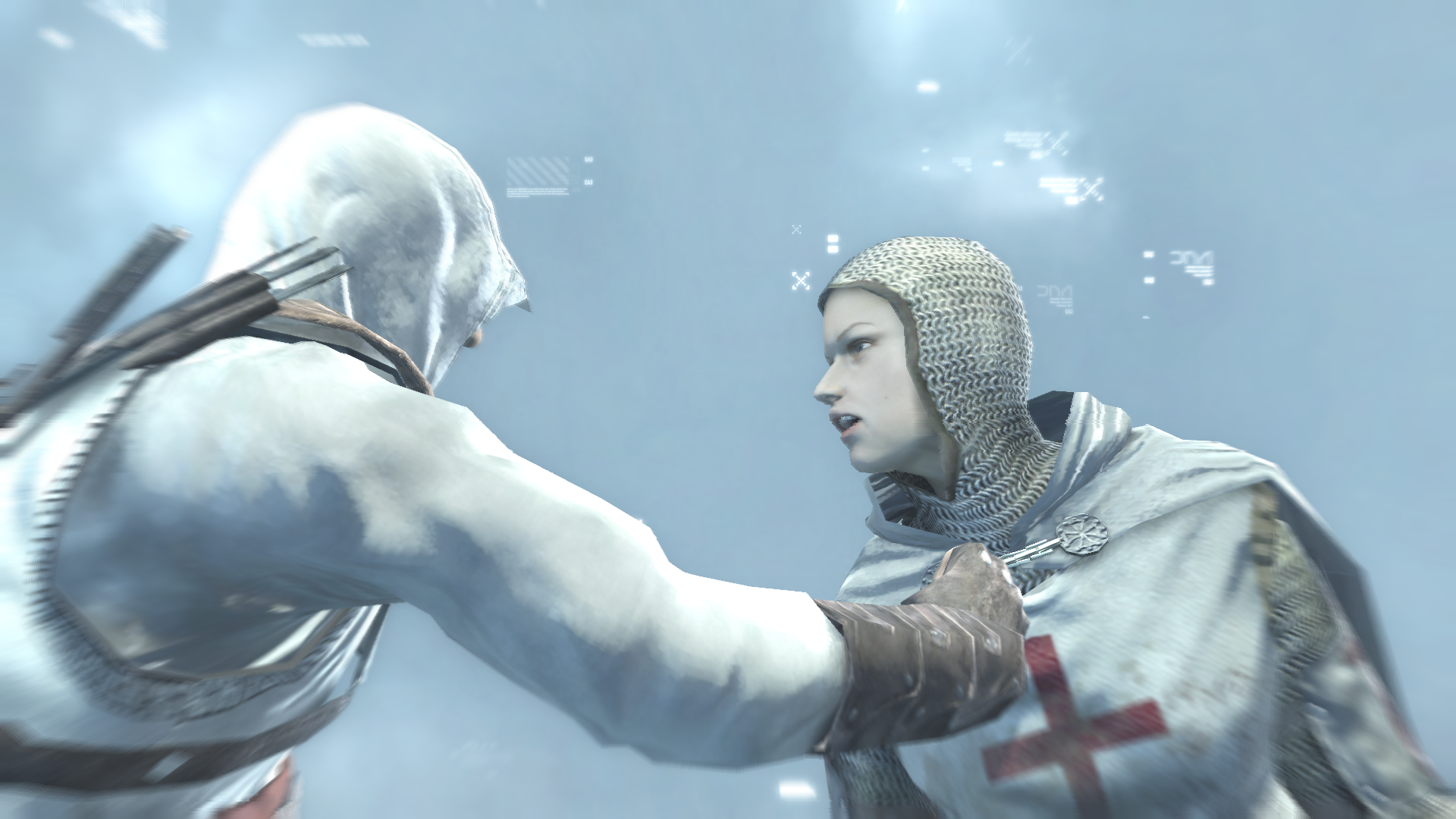Altair says “Nothing is true, everything is permitted” in Assassin’s Creed, but obviously he is wrong, because one thing that is true is Assassin’s Creed is an amazing game.
Ubisoft came out with the first Assassin’s Creed game came out in 2007. I personally didn’t play it until a few years later when I bought my PS3. It was actually the first video game that I played all the way through… in like three days. Assassin’s Creed awakened a love for gaming that I never really thought I could have.

PLEASE DO NOT CONTINUE READING UNLESS YOU ARE OKAY WITH SPOILERS
The Story
Assassin’s Creed begins with the player as Desmond Miles getting kidnapped by Abstergo Industries and forced into device known as “The Animus,” a technology that allows one to tap into the lives and memories of their ancestors. Desmond connects with his ancestor Altair Ibn-La’Ahad from the twelfth century Third Crusade. The first memory that Desmond taps into is hazy and difficult to discern due to synchronization problems, so the team decides to begin at earlier memories.

The creed of the assassins have three basic tenets: do not kill an innocent, hide in plain sight, and never compromise the brotherhood. Within the first few minutes of gameplay as Altair, all three are broken. As punishment, Altair is stripped from his title by Al Mualim, leader of the Assassins, and must redeem himself through nine increasingly difficult assassinations in Jerusalem, Acre, and Damascus. Interestingly, each assassination target (Majd Addin, Garnier de Maplouse, Jubair al Hakim, Abu’l Nuqoud, Grand Master Sibrand, William of Montferrat, and Robert de Sable) is based on an actual historical figure from the twelfth century.

As each target is killed there is a cut scene of a conversation between the two where the connection between Robert de Sable and the Templars is revealed. Eventually it is brought to light that Al Mualim is actually a Templar who used the Assassins to kill other Templars that knew about the Piece of Eden, which controls thoughts and creates illusions, so that he could have it for himself. Al Mualim denounces religion and religious events as falsities created by the Piece of Eden.
After Altair kills him, a vision of all of the locations of the other Pieces of Eden make themselves known to Altair and Miles. When Miles wakes up, he finds out that Abstergo is a modern-day front for the Templars and are on their way to retrieve the artifacts. The game ends with Miles walking into his room and seeing a hidden message on the wall left from the last person to undergo the Animus.
What people (read: I) love about the game
Though some people complain that the story line is too repetitive, I would have to disagree. Although the first few assassination targets all follow the same formula—heading to the city, finding the Assassin’s Bureau, gaining information about your target, returning again to the Assassin’s Bureau, and then killing the target—it does change a bit, especially toward the end. Such as when you think that you’re finally fighting Robert de Sable and it turns out to be Maria, Robert’s steward.

The best twist of all, though, comes when you find out that the beliefs that you have built the entire game are founded on lies and the man that you have trusted the most throughout gameplay is just using you for his own advancements toward world domination.

The ending of Assassin’s Creed where you just stare at a secret message on the wall referencing the 2012 apocalypse theory (which, we know now, is obviously not true) as you long to play the next game. By far it is one of the best game series I have ever played. Ezio Auditore da Firenze is an amazing character to play as well, but while playing I find myself missing Altair.
Safety and peace, my friends.






Published: May 15, 2014 06:57 pm